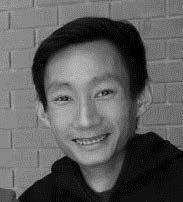SAS Atomic Technical Section Student Award Presented at SciX 2019
Four student researchers were presented with the Society for Applied Spectroscopy’s (SAS) Atomic Technical Section Student Award at SciX 2019.
Four student researchers were presented with the Society for Applied Spectroscopy’s (SAS) Atomic Technical Section Student Award at SciX 2019. Carlos Abad, a postdoctoral researcher at the Federal Institute for Materials Research and Testing (BAM) (Germany), Joseph E. Lesniewski, a PhD student at Georgetown University (Washington D.C.), Htoo Paing, a graduate student at Clemson University (Clemson, South Carolina), and Ingo Strenge, a final-year PhD candidate at the University of Seigen (Germany), received their awards on Tuesday October 15, at SciX 2019 in Palm Springs, California.

Abad earned his PhD in the spring of 2019 from the Humboldt-Universität zu Berlin. He was a visiting scientist at the Leibniz-Institute for Analytical Science in Berlin, Germany from 2015–2018, and at the Lawrence Berkeley National Laboratory in 2018. While working toward his PhD under the supervision of Norbert Jakubowski and Ulrich Panne, he developed a passion for spectrochemical analysis using optical and mass spectrometry. His research interests focus on the development and application of optical spectrometry of transient diatomic molecules for trace analysis of non-metals and stable isotope analysis. He has been an active science communicator and member of the SAS since 2017.

Lesniewski is working toward his PhD at Georgetown under the guidance of Kaveh Jorabchi. Prior to his work at Georgetown, he was twice awarded a Summer Undergraduate Research Fellowship, which supported his research at the National Institute of Technology (NIST) headquarters in Gaithersburg, Maryland. At Georgetown, Lesniewski’s work focuses on addressing high-sensitivity elemental quantification of non-metals, such as chlorine and fluorine, for facile quantification of analytes without compound-specific standards. Lesniewski hopes to further improve sensitivity of non-metal elemental analyses through exploring new ionization chemistries, and to expand the applications of elemental quantification in environmental and pharmaceutical investigations.

Paing is working on developing the liquid sampling atmospheric pressure glow discharge plasma (LS–APGD) as a miniature ionization and excitation source for various applications from nuclear security to pharmaceutical analysis under the mentorship of Kenneth Marcus. With his research, Paing hopes to deconvolute some of the mechanisms and processes occurring in LS–APGD. Paing recently was awarded the Innovations in Nuclear Technology R&D Award from the Department of Energy. He would like to pursue a career in academia.

Strenge’s research, under the direction of Carsten Engelhard, focuses on improving methods and instrumentation for the detection and characterization of single nanoparticles using inductively-coupled plasma–mass spectrometry (ICP-MS). He developed novel data acquisition and processing concepts to overcome current limitations of ICP-MS platforms such as insufficient time resolution, finite measurement duration, low-duty cycle, and other measurement artifacts known to occur in the realm of single-particle ICP-MS (spICP-MS). His current work is with NIST, where he continues his research and helps to establish, evaluate, and improve microsecond time-resolved spICP-MS within their laboratories.
Best of the Week: Exclusive on Flow Imaging Microscopy, Interview with PNNL Chief Science Officer
April 4th 2025Top articles published this week include several interviews with key opinion leaders on various topics including advanced mass spectrometry (MS) technologies in studying diseases, microplastic detection, and interpreting Raman spectra.
New Multi-Spectroscopic System Enhances Cultural Heritage Analysis
April 2nd 2025A new study published in Talanta introduces SYSPECTRAL, a portable multi-spectroscopic system that can conduct non-invasive, in situ chemical analysis of cultural heritage materials by integrating LIBS, LIF, Raman, and reflectance spectroscopy into a single compact device.